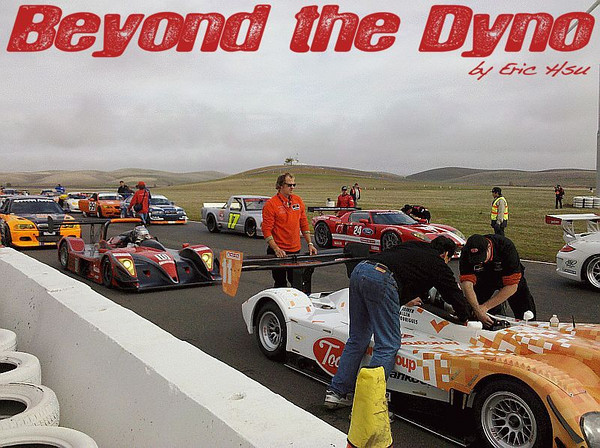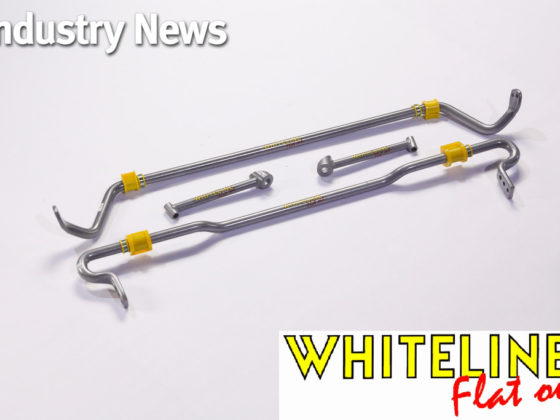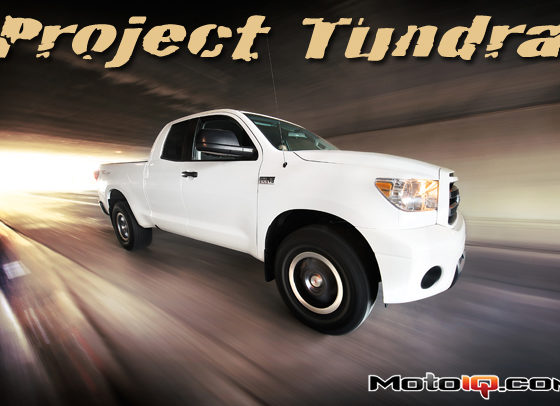,
After the engine was rebuilt and with the engine back on the dyno again, everything went really smooth this time with a smooth break in, relatively quick ECU calibration (the Pectel SQ6 rocks), and smooth power testing. It sure helps when the correct piston rings are in the engine. The engine finished at around 430bhp DIN (our dynos are British) at only 14psig of boost and a peak of 320 lb.-ft torque. From 3000-8000rpm, the torque was over 260 lb.-ft. Our original power goal was 450bhp, but being that time was short and the team was in a rush for the engine, we left it at 430. 430bhp in the 1450 lb. Panoz DP-02 would give it a rate of acceleration similar to a 2900 lb car with 860bhp. A 3000 lb. car with 900hp at the wheels that comes to mind is the XS Engineering BNR32 Skyline GT-R time attack car, but the Panoz DP-02 would do it for 24 hours instead of only 2 laps. With the potential acceleration of a 900hp Skyline GT-R, the Panoz would have zero problems accelerating through traffic.

The Cosworth billet crankshafts are beautifully machined from solid EN40B alloy (aka SAE4340) bar stock in our crankshaft factory in Northampton, UK. A slightly lighter version of this crankshaft is used in the Formula Atlantic engines.

The Cosworth Big Valve Duratec/MZR (internally referred to as the “BVD head”) cylinder head was developed and is machined and assembled at Cosworth in Torrance, CA. The intake and exhaust ports are CNC ported and hand blended. The intake valve is stainless steel and the exhaust valve is Nimonic 80 (similar to Inconel). The intake ports flow 379 cfm @ .500″ valve lift which is very healthy.

The camshafts are also ground at one of our Northampton, UK factories. The cores are chill cast for excellent wear characteristics with the OEM Mazda tappet buckets. The inlet cam has a 303 degree duration and 12.5mm lift whereas the exhaust cam has a 290 degree duration and 11.3mm lift. Yes, small cams are for wusses.
The goal of the engine was to have 450bhp at a “low” boost level and a flat torque curve across a very wide rpm band to make the car easy to drive. To achieve this, an open exhaust, efficient induction system, and good intercooling are a must. I almost always use as big of a cam as possible if the rest of the valve train can handle the lift and ramp. The cylinder head must always be capable of flowing at the valve lifts the camshafts will generate. The BVD head comes from Cosworth ready to run cams this large right off the shelf with bespoke valve springs, retainers, and cotters.

To keep the electical system running, a Cosworth alternator kit was used on the engine. Normally the alternator cranks out 40 amps, but for this car we had one specially modified to 80 amps since the multiple headlights (4) would have to run throughout the night at Thunderhill. TH has no lights and is literally pitch black if you are alone on the track.

Oil scavenging was handled by a Cosworth 3 stage dry sump system. The three scavenge stages keep the turbo engine’s crankcase in a vacuum at all times when the engine is above 4000 rpm. Not only does all of the engine oil get scavenged to the oil tank, but all of the engine components are not hampered by wind resistance since the laws of aerodynamics do not apply in a vacuum. A version of this dry sump is used in our Formula Atlantic engines also.

The factory Mazda MZR/Ford Duratec does not use a keyed crankshaft and timing chain sprocket. Sounds scary doesn’t it? The factory version uses a couple of friction washers. The Cosworth versions are keyed as you can see here.

In today’s world of minimal profit and “green” eco conscious manufacturing, many OE bearings in econobox engines are now using aluminum tin bearings. These might be great for profit and for recyclability, but they suck big time for high output 4 cylinder engines where each power stroke is beating the shit out of each bearing constantly. Cosworth uses bespoke race grade rod bearings that are superior to the OE rod bearings in every way, shape, and form. Sure, the recycler might not like them, but how much did that billet crank with the spun rod journal cost you?



